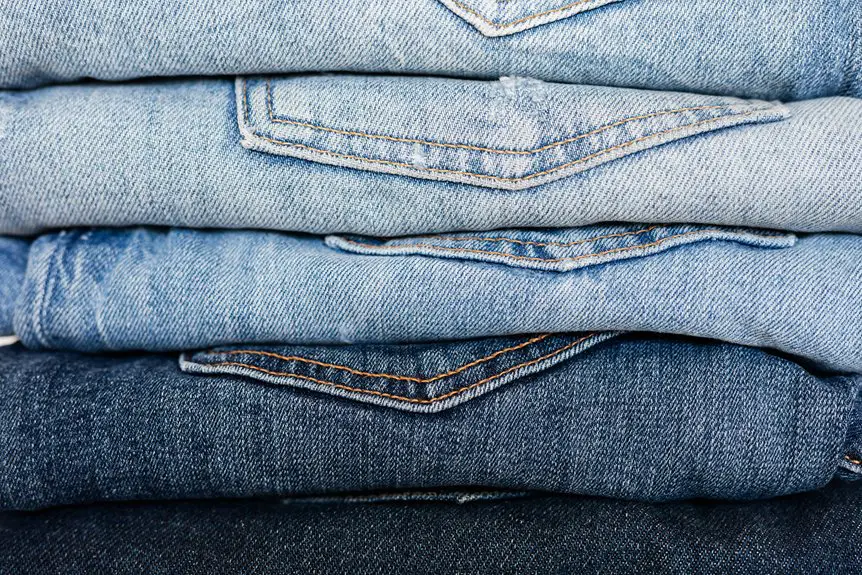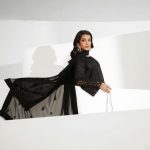You’ll want black scrim fabric if you need to control light tightly and create sharp shadows, as it absorbs light and enhances contrast. White scrim fabric is your go-to for diffusing light softly, producing even illumination without harsh shadows. Black is perfect for blocking unwanted light, while white works well for backdrops and projections. Depending on your project’s lighting and visual needs, choosing the right scrim can transform your setup—let’s explore how to pick the best one.
Table of Contents
Key Takeaways
- Black scrim absorbs light, creating sharp shadows and high-contrast visuals, ideal for blocking light and adding depth on stage or film.
- White scrim transmits and diffuses light softly, perfect for rear projection, soft illumination, and even light distribution in photography and events.
- Choose black scrim for durability and stain resistance when you need long-lasting fabric with minimal maintenance.
- Opt for white scrim when you require a translucent backdrop or partition that brightens spaces without harsh shadows.
- Avoid using black scrim for projection needs; white scrim excels at softening and evenly diffusing light in such applications.
Understanding Scrim Fabric and Its Uses
Scrim fabric is a lightweight, loosely woven material that you’ll find in various industries due to its strength and versatility. When you use scrim, you’re relying on its ability to reinforce surfaces without adding much weight.
It’s common in theater backdrops, photography, and construction, where durability and breathability matter. You’ll also see it in upholstery and bookbinding because it adds structure without bulk.
If you work in event production, scrim helps create visual effects by controlling light and transparency. Its open weave lets air and light pass through, making it ideal for layering.
Whether you’re a designer or builder, understanding scrim fabric’s properties helps you choose the right type for your project’s specific needs.
Key Differences Between Black and White Scrim Fabric
When choosing between black and white scrim fabric, you’ll notice they handle light differently, which affects your project’s look and feel.
Black scrim tends to block more light, creating a bolder visual impact, while white scrim allows more light through, offering a softer appearance.
Understanding these differences helps you pick the right fabric for your specific application and desired effect.
Light Transmission Characteristics
Although both black and white scrim fabrics serve as effective light modifiers, they differ considerably in how they transmit and diffuse light.
When you use black scrim, it tends to absorb more light, resulting in minimal transmission and creating sharper shadows. This makes black scrim ideal if you want to control or block light without much diffusion.
On the other hand, white scrim allows a higher level of light transmission, scattering light evenly and producing softer, more diffused illumination. If your goal is to brighten a scene gently or reduce harsh shadows, white scrim is the better choice.
Understanding these light transmission characteristics helps you select the scrim fabric that best suits your lighting needs, whether you prioritize light control or diffusion.
Visual Appearance Impact
Because the visual impact of your lighting setup depends heavily on fabric choice, understanding how black and white scrim affect appearance is essential.
When you use black scrim fabric, it absorbs light, reducing glare and creating a more muted, controlled look. This makes shadows sharper and colors appear richer.
On the other hand, white scrim fabric reflects more light, producing a softer, diffused effect that brightens your scene and minimizes harsh shadows.
Choosing black scrim results in a dramatic, high-contrast visual, while white scrim offers a clean, even illumination that feels natural.
Application and Usage Differences
Understanding how black and white scrim fabrics perform in different scenarios helps you choose the right one for your project. Black scrim works best when you need to block light or create a shadow effect, while white scrim is ideal for diffusion and light reflection. Your choice depends on whether you want to absorb or scatter light.
| Application | Black Scrim | White Scrim |
|---|---|---|
| Light Blocking | Excellent for blocking light | Poor, lets light through |
| Projection Screen | Not suitable | Ideal for rear projection |
| Stage Effects | Creates shadows and depth | Softens light, enhances glow |
Light Transmission and Opacity Comparison
When you compare scrim fabrics, you’ll notice they vary considerably in how much light they let through and how opaque they appear.
Black scrim fabric offers higher opacity, blocking more light and creating a denser visual barrier. This makes it ideal when you want to reduce light transmission or achieve a darker backdrop.
Black scrim fabric provides greater opacity, effectively blocking light for a darker, more solid backdrop.
On the other hand, white scrim fabric allows more light to pass through due to its lighter color and weave, resulting in less opacity. This quality helps soften harsh lighting and provides a diffused effect without completely blocking visibility.
Understanding these differences helps you choose the right scrim fabric based on how much light control and opacity your project requires, ensuring you get the exact visual effect you’re aiming for without compromise.
Impact on Lighting and Visual Effects
Although scrim fabrics might seem simple, their impact on lighting and visual effects is significant.
When you use black scrim fabric, it absorbs light, creating deep shadows and enhancing contrast. This helps you control unwanted reflections and focus attention on specific areas, making scenes more dramatic.
On the other hand, white scrim fabric reflects light, softening shadows and diffusing illumination evenly. You’ll find it useful when you want a gentle glow or to brighten a space without harshness.
Both fabrics interact differently with light sources, so your choice directly affects mood and visibility. Understanding these effects allows you to manipulate lighting creatively, ensuring your visuals look exactly how you intend, whether you need sharp definition or a soft, ambient feel.
Applications in Theater and Stage Design
Since lighting plays a crucial role in theater, scrim fabrics become essential tools for stage designers. When you choose black scrim fabric, you can create mysterious, dramatic effects by absorbing light and revealing only silhouettes or shadows. It’s perfect for scenes needing subtlety or surprise.
On the other hand, white scrim fabric offers versatility—you can use it as a translucent screen to project images or lighting effects, making scenes more dynamic and immersive. You’ll find both fabrics invaluable for quick scene changes, masking backstage areas, or adding depth to your sets.
Uses in Photography and Videography
You’ll find scrim fabric invaluable for controlling light and creating soft diffusion in your shoots.
It helps shape shadows and highlights, giving you more creative control over your images and videos.
Plus, you can use it as a subtle background to add texture without distraction.
Light Control Effects
When you work with scrim fabric in photography and videography, you gain precise control over light intensity and diffusion.
Black scrim fabric lets you reduce light without altering its color, giving you sharper shadows and more contrast. It’s perfect when you want to darken a scene or prevent light spill.
White scrim fabric softens the light, creating a gentle, even glow that reduces harsh shadows. Use it when you need a flattering, natural look or want to balance multiple light sources.
Both fabrics help shape your scene’s mood by adjusting brightness and shadow detail. Choosing between black and white scrim depends on whether you want to block or soften light, giving you flexibility to craft the perfect lighting for your shot.
Background and Diffusion
Although scrim fabric is often valued for controlling light, it also plays an essential role as a background and diffusion material in photography and videography.
When you use white scrim fabric, it acts as a soft, translucent backdrop that evenly diffuses harsh light, creating a natural, flattering glow on your subject. This makes it ideal for portrait shoots or product photography where you want gentle illumination.
On the other hand, black scrim fabric serves as a great background when you want to absorb light and reduce reflections, helping your subject stand out sharply against a dark setting.
Benefits of Black Scrim Fabric
Many professionals choose black scrim fabric because it offers excellent light control and durability. When you use black scrim, you can effectively block unwanted light, creating sharp shadows and reducing glare.
It’s also tougher, resisting wear and tear better than lighter fabrics. You’ll find it ideal for both indoor and outdoor settings where durability matters. Plus, black scrim fabric enhances contrast, making visuals pop.
Here’s why you might pick black scrim fabric:
- Superior light absorption for precise control
- Increased durability against weather and handling
- Minimizes reflections and glare effectively
- Enhances visual contrast and definition
- Suitable for stage, film, and architectural applications
Choosing black scrim fabric helps you achieve professional-quality results with reliable performance.
Benefits of White Scrim Fabric
You’ll appreciate how white scrim fabric softens and diffuses light, creating a clean, even glow.
It fits a wide range of uses, from stage backdrops to photography screens.
Plus, its bright surface boosts visibility, making details easier to see and work with.
Light Diffusion Properties
When you need to soften harsh lighting without losing brightness, white scrim fabric excels at diffusing light evenly. It spreads light smoothly, reducing sharp shadows and glare, making your setup look professional and polished.
You’ll find it especially useful when balancing natural and artificial sources or creating a gentle ambient glow.
Here’s why white scrim fabric stands out for light diffusion:
- Provides uniform light distribution
- Minimizes hotspots and uneven lighting
- Maintains high light transmission
- Softens shadows without dimming
- Enhances the quality of photography and videography lighting
Choosing white scrim fabric helps you control light effectively, ensuring your scenes appear naturally lit and inviting without harsh contrasts.
Versatile Application Uses
Although white scrim fabric is often prized for its light diffusion, its versatility extends far beyond that single benefit. You can use it in theater productions, where it serves as a backdrop that interacts seamlessly with lighting. It’s perfect for creating subtle visual effects without overpowering the scene.
In photography and film, white scrim fabric helps you control soft, even lighting, making your shots look professional and polished. You’ll also find it useful in event spaces to partition areas without blocking light, maintaining an open feel.
Plus, it’s ideal for crafting lightweight, breathable covers or screens that protect while allowing airflow. Whether you’re working on creative projects or practical setups, white scrim fabric adapts to your needs with ease and efficiency.
Enhanced Visibility Features
Because white scrim fabric combines translucency with a subtle texture, it enhances visibility without sacrificing privacy or light quality.
When you choose white scrim, you get a material that lets natural light filter through while softly diffusing it, which helps maintain clear sightlines. This makes it ideal for situations where you want brightness and visibility but still need some discretion.
Here’s why white scrim fabric stands out for enhanced visibility:
- Allows natural light to shine through evenly
- Minimizes glare and harsh shadows
- Maintains a clear view from one side
- Provides a subtle privacy barrier
- Works well in both indoor and outdoor settings
With these features, white scrim fabric gives you the perfect balance between visibility and light control.
Choosing Scrim Fabric Based on Project Needs
Selecting the right scrim fabric hinges on understanding your project’s specific demands.
If you need to control light and reduce glare, white scrim fabric works well by diffusing light evenly. On the other hand, black scrim fabric excels when you want to block light or create a backdrop with minimal reflection.
Consider the environment too: white scrim suits outdoor setups where brightness matters, while black scrim fits indoor settings needing subtlety.
Also, think about visibility—white scrim enhances visibility on stage or displays, whereas black scrim can help hide equipment or structure.
By matching scrim fabric to your lighting, visibility, and aesthetic needs, you’ll guarantee your project achieves the desired visual effect without compromise.
Choose wisely based on these functional priorities.
Maintenance and Durability Considerations
When you choose scrim fabric, understanding its maintenance and durability is essential to guarantee long-lasting performance.
Both black and white scrim fabrics have unique qualities, but their upkeep differs slightly. You’ll want to contemplate how often you clean and the environment where you use the fabric.
Here’s what to keep in mind:
- Black scrim resists stains better, reducing cleaning frequency.
- White scrim shows dirt easily, requiring more regular washing.
- Both fabrics are durable but avoid harsh chemicals that weaken fibers.
- Store scrim fabric away from direct sunlight to prevent fading.
- Inspect regularly for tears or wear to address issues early.
Frequently Asked Questions
Can Scrim Fabric Be Used Outdoors in Various Weather Conditions?
You can use scrim fabric outdoors, but you’ll need to choose one with weather-resistant properties. Some scrims handle rain, sun, and wind better than others, so check for UV protection and water repellency before using it outside.
What Are the Environmental Impacts of Producing Black vs. White Scrim Fabric?
Fabric fabrication frequently fuels footprints, forcing you to factor in environmental effects. Black dyeing often demands more chemicals and energy, while white scrim typically uses less processing, so you’ll want to weigh your ecological impact wisely.
Are There Any Safety Concerns When Cutting or Handling Scrim Fabric?
When cutting or handling scrim fabric, you should wear gloves to avoid irritation and use sharp tools carefully to prevent injury. Guarantee good ventilation, as dust or fibers can cause respiratory discomfort if inhaled.
How Does Scrim Fabric Perform in Acoustic Treatments?
You want quiet, and scrim fabric helps you get it; it absorbs sound waves, reduces echoes, and blends with your space. You’ll find it effective for acoustic treatments, improving sound quality without bulk or hassle.
Can Scrim Fabric Be Customized With Prints or Patterns?
You can definitely customize scrim fabric with prints or patterns. It’s versatile, allowing you to add logos, designs, or colors to fit your project’s style without compromising its lightweight, translucent qualities.
- Does Chiffon Fabric Stink - July 15, 2025
- Does Chiffon Fabric Affect the Economy - July 15, 2025
- Does Cotton Fabric Have a Nap - July 15, 2025







